NZXT Sentry 2 Touch Screen 5.25" 5 Channel Fan and Temperature Controller Black
Manufacturer and code
NZXT: Sentry 2
Cost
24.79 (inc VAT @20%)
Supplier
Withheld by G-Dubs in respect of forum rules.

Description and overview
A Touch Screen Five channel single bay fan controller from case and accessory manufacturer NZXT. The unit is able to fully control up to 5 fans in either manual or automatic mode. The sentry 2 forms part of the greater range of NZXT fan controllers
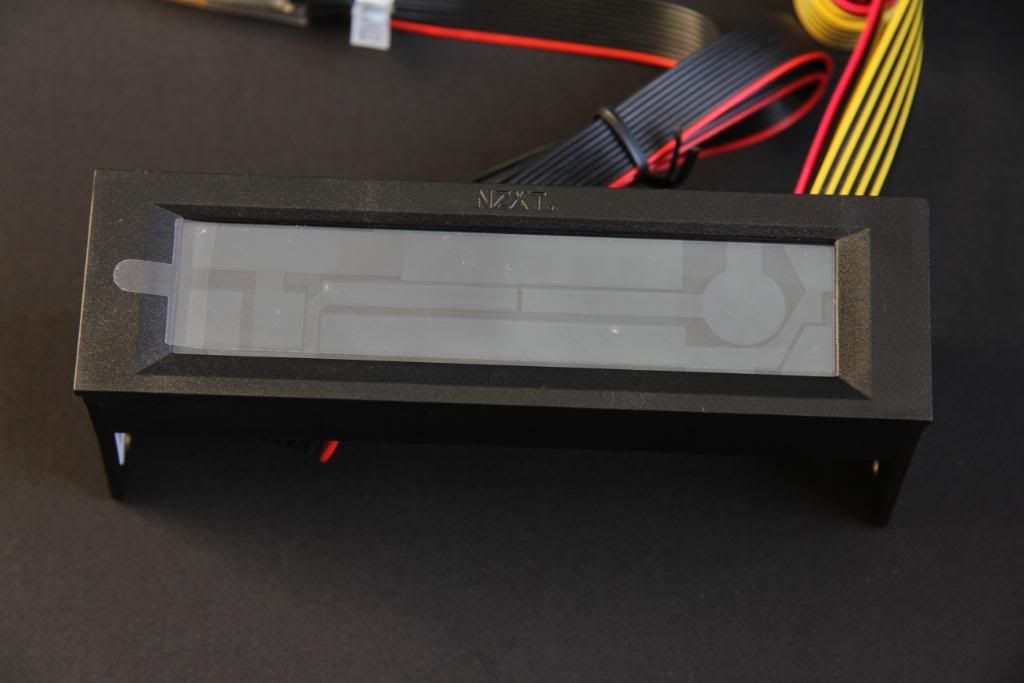
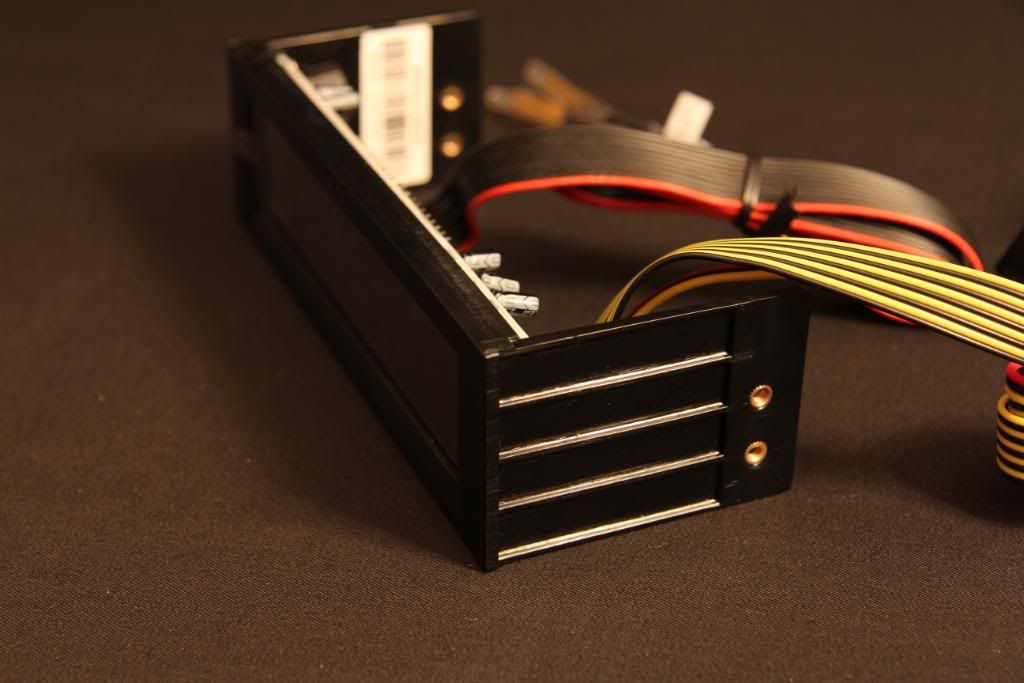

First impressions and quality.
Wow what a lot of wires. So many my first reaction was to panic and snap shut the lid of the box for a few moments while I collected my thoughts. Thoughts collected and resolve fortified with a cup of particularly strong tea I had another peek under the lid. Yes there are a lot of wires, but what was I expecting? It's a 5 channel fan controller with an automatic mode enabled by the use of multiple temperature sensors. Last time I checked there weren't any Wi-Fi or Bluetooth enable fans, so power, control and monitoring is going to require a lot of wires, I'll come back to what they all do later on in the review, but for now let's talk about the front end of this bit of kit.
The control unit itself is made of plastic, with the finish giving it a very similar appearance to the front face of an DVD drive and like a DVD drive it also fits into a single 5 1/4" bay. The unit feels sturdy and although the front isn't a nice piece of machined Billet steel it is finished to a reasonable degree giving an overall feel of quality.
Instructions.
Instructions are included for both fitting and operation of the controller. They are clear, concise and easy to read, informing you in a step by step way exactly what goes where and how it all works together.
Fitting.
As you probably gathered from my first impressions I was a little over awed by the amount of cabling involved in installing this unit. The reason for this was twofold. First, If I'm honest, I was a little fearful of just how complicated it was going to be to install. More wires = more complex surely. Second, as I'm one of those who thinks that people who have cases that look like the inside of a vipers nest should be reserved a special place in silicon Hell I was pooping myself at the thought of having to find secret places hide all those wires.
Never being one to be put off easily (can we forget about the panic attack when I opened the box for the first time) I dived on in and got started.
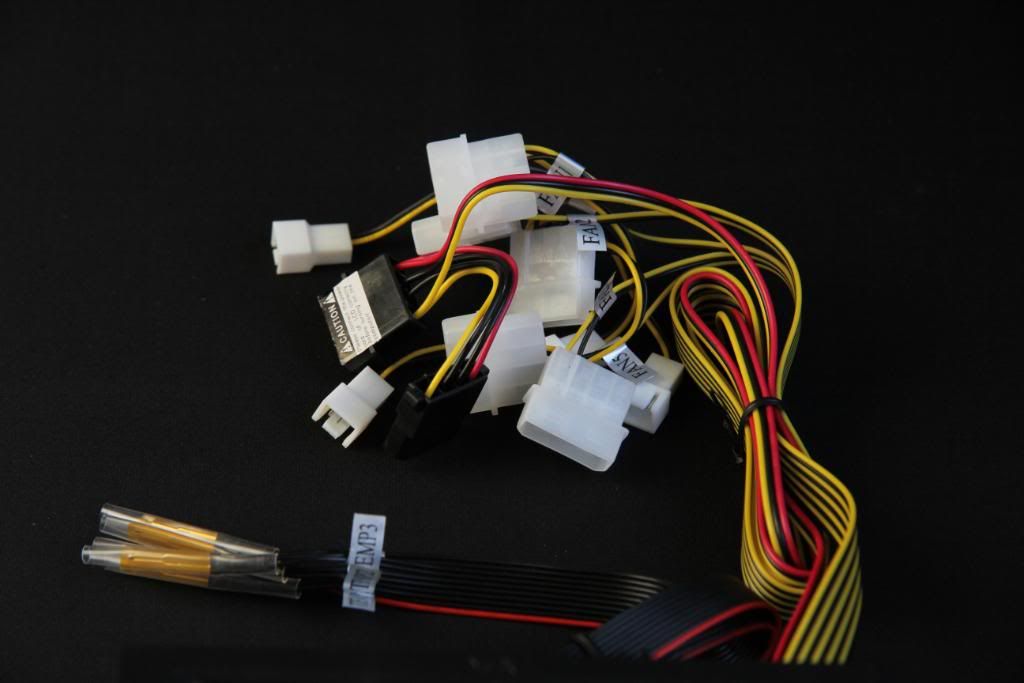
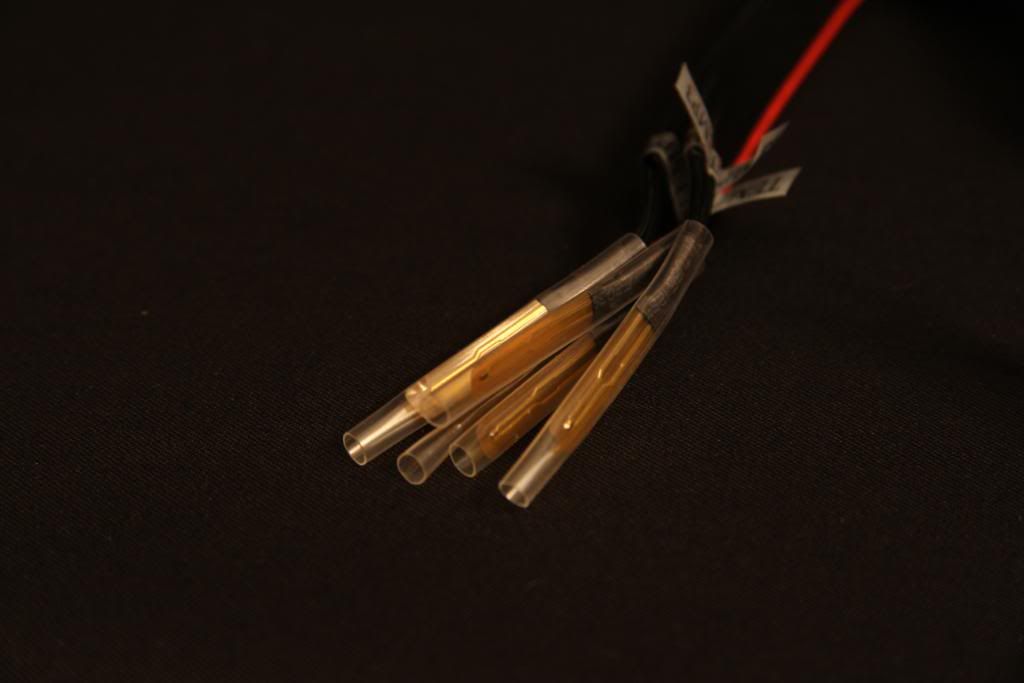

Well I have to say actually not as bad as I thought at all, yes there are a lot of wires (think I may have mentioned that), but for the most part these can all be kept up by the rear of the control unit itself. For each channel you have two means of providing power (3 pin fan or Molex), and one means of monitoring (the thin black leads with the gold coloured tabs on the ends. In essence after you have attached your fans to the case you bring the power connector from it back to the rear of the unit and attach it to the appropriate power socket. You then trail off a monitoring wire to a location adjacent to the fan so that the temperature in that area can be monitored. You don't actually have to put the monitor wires beside the fans, but if you want to make the most of the automatic mode the instructions suggest this is the best place to attach them. All wires supplied are plenty long enough to enable them to be hidden away behind the mobo tray and other conveniently placed structures. The whole unit receives the power it provides via a single Molex connection to your PSU. I'm pleased to say that when I'd finished not a single cable could be seen.
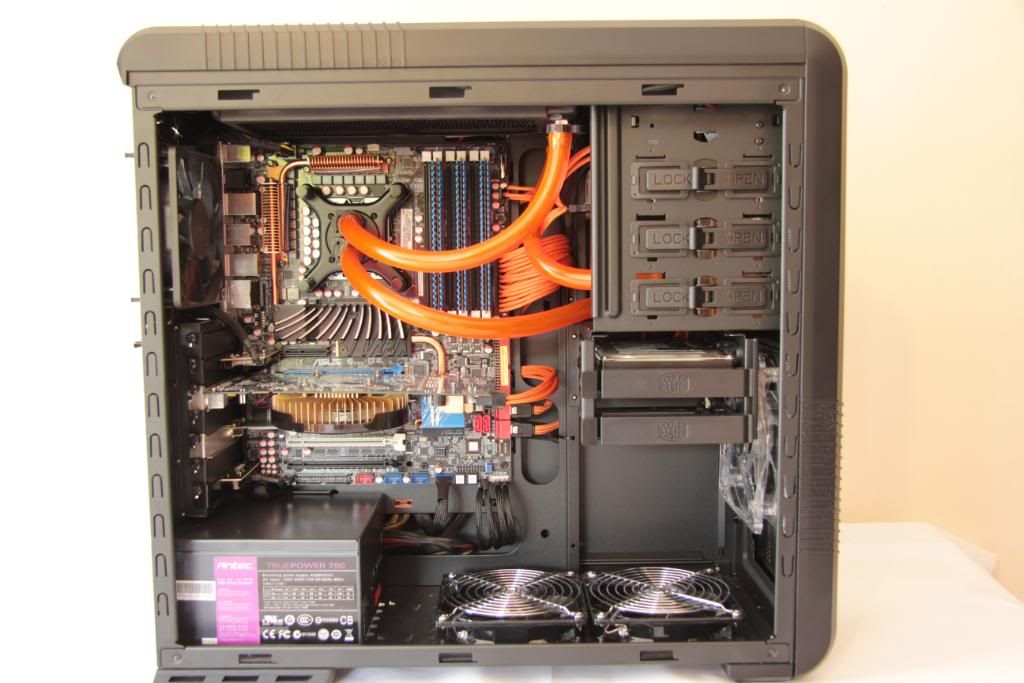
Performance.
As with so many bits of kit these days Performance must be assessed by both its actual physical capabilities and its aesthetic qualities.
So Aesthetics first I think. When you take it out of the box and examine it It's not actually ugly, but then it's not actually pretty either. As I've mentioned a nice machine aluminium faceplate would have improved it's looks no end, but then would probably increased its price also. Having seen pictures I was a little concerned that in operation it would make the front of my case look like a pub fruit machine. In fact the lighting and colours aren't too intrusive at all. Add to that the ability to turn the display off whilst leaving the unit running and everyone's happy. The inclusion of a touch screen interface control means the front fascia is refreshingly clear of knobs and excrescencies.
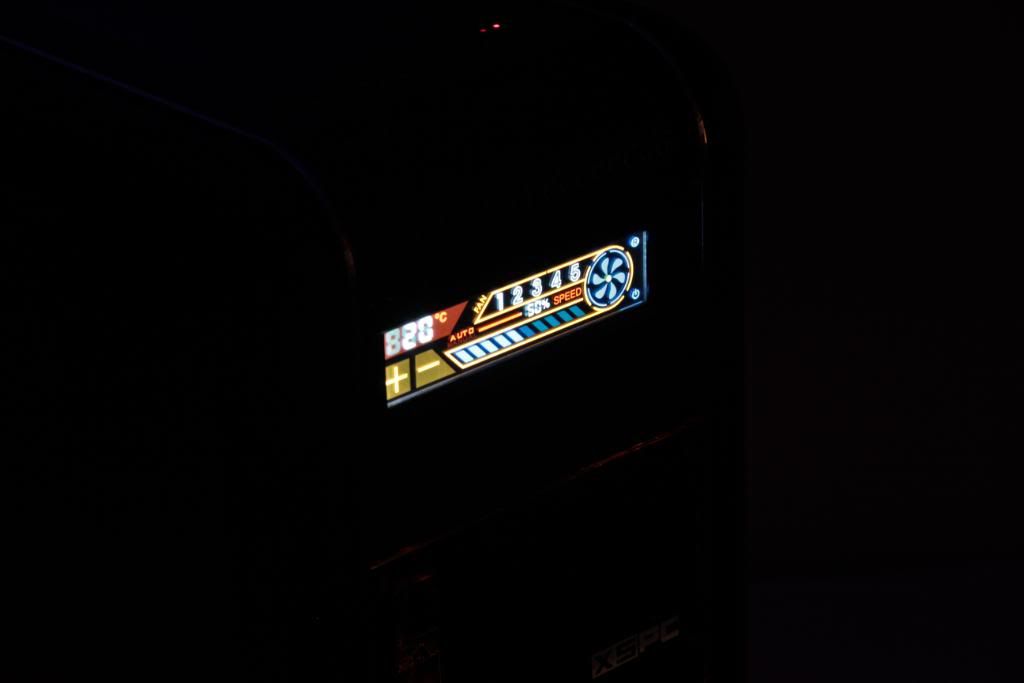

Operating the unit via the touch screen interface is a doddle. Although it comes with very well written and illustrated operating instructions, being a man I always like to see if I can sort it myself without taking the easy option and resorting to reading the instructions. Be honest guys, when we get something as complex as a new car we don't sit down for a few hours and carefully read the instructions, taking plenty of time to ensure we fully understand the intricacies of every control input device. No we don't, we hop in, take it for a spin and start pressing buttons to see what happens. If nothing appears to happen we turn up a quiet lane, pull over and having checked to see that we're not being observed, have a crafty peek at the instructions to see what that button actually does.
Without going into too much detail the first mode the unit can be set into is automatic mode whereby it will monitor the fans and increase or decrease their speed respectively as temperature and pre programmed thresholds dictate. The second mode is manual mode. Here you set the speeds of the fans manually and then leave them. In this mode the fans will not respond to temperature changes. The fan speeds can set individually, or as a whole.

Conclusion.
A simple and yet versatile fan controller. Nicely made and with very good installation and operating instructions. It exists at a price point that makes it very competitive in the heavily populated world of fan controllers
Good points.
Instructions
range of operating mode options
Intuitive operation
Touch Screen interface
Bad points.
Bit plasticy in appearance
How could the product be improved?
performance wise it couldn't, but a nice machined aluminium faceplate or perhaps interchangeable ones as per XSPC bay reservoirs would make it even better
Would I want to spend more to make it better?
Perhaps £5 or so for the face plate, but still a cracking buy as it is.
Manufacturer and code
NZXT: Sentry 2
Cost
24.79 (inc VAT @20%)
Supplier
Withheld by G-Dubs in respect of forum rules.

Description and overview
A Touch Screen Five channel single bay fan controller from case and accessory manufacturer NZXT. The unit is able to fully control up to 5 fans in either manual or automatic mode. The sentry 2 forms part of the greater range of NZXT fan controllers



First impressions and quality.
Wow what a lot of wires. So many my first reaction was to panic and snap shut the lid of the box for a few moments while I collected my thoughts. Thoughts collected and resolve fortified with a cup of particularly strong tea I had another peek under the lid. Yes there are a lot of wires, but what was I expecting? It's a 5 channel fan controller with an automatic mode enabled by the use of multiple temperature sensors. Last time I checked there weren't any Wi-Fi or Bluetooth enable fans, so power, control and monitoring is going to require a lot of wires, I'll come back to what they all do later on in the review, but for now let's talk about the front end of this bit of kit.
The control unit itself is made of plastic, with the finish giving it a very similar appearance to the front face of an DVD drive and like a DVD drive it also fits into a single 5 1/4" bay. The unit feels sturdy and although the front isn't a nice piece of machined Billet steel it is finished to a reasonable degree giving an overall feel of quality.
Instructions.
Instructions are included for both fitting and operation of the controller. They are clear, concise and easy to read, informing you in a step by step way exactly what goes where and how it all works together.
Fitting.
As you probably gathered from my first impressions I was a little over awed by the amount of cabling involved in installing this unit. The reason for this was twofold. First, If I'm honest, I was a little fearful of just how complicated it was going to be to install. More wires = more complex surely. Second, as I'm one of those who thinks that people who have cases that look like the inside of a vipers nest should be reserved a special place in silicon Hell I was pooping myself at the thought of having to find secret places hide all those wires.
Never being one to be put off easily (can we forget about the panic attack when I opened the box for the first time) I dived on in and got started.



Well I have to say actually not as bad as I thought at all, yes there are a lot of wires (think I may have mentioned that), but for the most part these can all be kept up by the rear of the control unit itself. For each channel you have two means of providing power (3 pin fan or Molex), and one means of monitoring (the thin black leads with the gold coloured tabs on the ends. In essence after you have attached your fans to the case you bring the power connector from it back to the rear of the unit and attach it to the appropriate power socket. You then trail off a monitoring wire to a location adjacent to the fan so that the temperature in that area can be monitored. You don't actually have to put the monitor wires beside the fans, but if you want to make the most of the automatic mode the instructions suggest this is the best place to attach them. All wires supplied are plenty long enough to enable them to be hidden away behind the mobo tray and other conveniently placed structures. The whole unit receives the power it provides via a single Molex connection to your PSU. I'm pleased to say that when I'd finished not a single cable could be seen.

Performance.
As with so many bits of kit these days Performance must be assessed by both its actual physical capabilities and its aesthetic qualities.
So Aesthetics first I think. When you take it out of the box and examine it It's not actually ugly, but then it's not actually pretty either. As I've mentioned a nice machine aluminium faceplate would have improved it's looks no end, but then would probably increased its price also. Having seen pictures I was a little concerned that in operation it would make the front of my case look like a pub fruit machine. In fact the lighting and colours aren't too intrusive at all. Add to that the ability to turn the display off whilst leaving the unit running and everyone's happy. The inclusion of a touch screen interface control means the front fascia is refreshingly clear of knobs and excrescencies.


Operating the unit via the touch screen interface is a doddle. Although it comes with very well written and illustrated operating instructions, being a man I always like to see if I can sort it myself without taking the easy option and resorting to reading the instructions. Be honest guys, when we get something as complex as a new car we don't sit down for a few hours and carefully read the instructions, taking plenty of time to ensure we fully understand the intricacies of every control input device. No we don't, we hop in, take it for a spin and start pressing buttons to see what happens. If nothing appears to happen we turn up a quiet lane, pull over and having checked to see that we're not being observed, have a crafty peek at the instructions to see what that button actually does.
Without going into too much detail the first mode the unit can be set into is automatic mode whereby it will monitor the fans and increase or decrease their speed respectively as temperature and pre programmed thresholds dictate. The second mode is manual mode. Here you set the speeds of the fans manually and then leave them. In this mode the fans will not respond to temperature changes. The fan speeds can set individually, or as a whole.

Conclusion.
A simple and yet versatile fan controller. Nicely made and with very good installation and operating instructions. It exists at a price point that makes it very competitive in the heavily populated world of fan controllers
Good points.
Instructions
range of operating mode options
Intuitive operation
Touch Screen interface
Bad points.
Bit plasticy in appearance
How could the product be improved?
performance wise it couldn't, but a nice machined aluminium faceplate or perhaps interchangeable ones as per XSPC bay reservoirs would make it even better
Would I want to spend more to make it better?
Perhaps £5 or so for the face plate, but still a cracking buy as it is.


